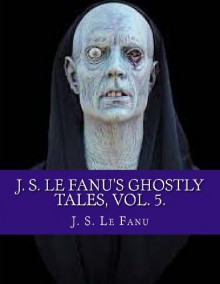J. S. Le Fanu's Ghostly Tales, Vol. 5.
Le Fanu worked in many genres but remains best known for his mystery and horror fiction. He was a meticulous craftsman and frequently reworked plots and ideas from his earlier writing in subsequent pieces. Many of his novels, for example, are expansions and refinements of earlier short stories....
show more
Le Fanu worked in many genres but remains best known for his mystery and horror fiction. He was a meticulous craftsman and frequently reworked plots and ideas from his earlier writing in subsequent pieces. Many of his novels, for example, are expansions and refinements of earlier short stories. He specialised in tone and effect rather than "shock horror", and liked to leave important details unexplained and mysterious. He avoided overt supernatural effects: in most of his major works, the supernatural is strongly implied but a "natural" explanation is also possible. The demonic monkey in "Green Tea" could be a delusion of the story's protagonist, who is the only person to see it; in "The Familiar", Captain Barton's death seems to be supernatural, but is not actually witnessed, and the ghostly owl may be a real bird. This technique influenced later horror artists, both in print and on film (see, for example, the film producer Val Lewton's principle of "indirect horror"). Though other writers have since chosen less subtle techniques, Le Fanu's best tales, such as the vampire novella "Carmilla", remain some of the most powerful in the genre. He had enormous influence on the 20th century's most important ghost story writer, M. R. James, and although his work fell out of favor in the early part of the 20th century, towards the end of the century interest in his work increased and remains comparatively strong.
show less

